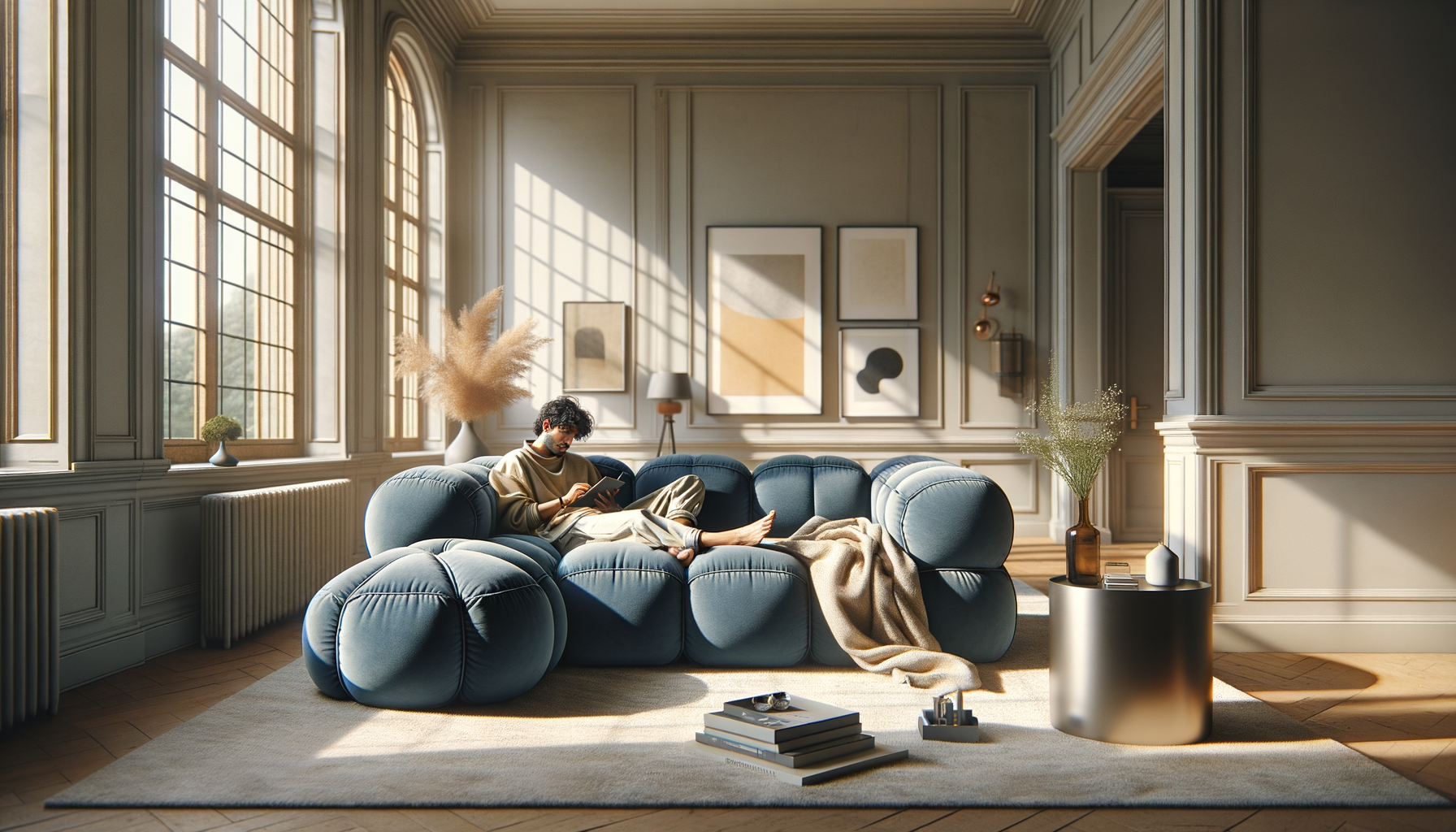The Togo sofa celebrates its fiftieth anniversary, captivating hearts and homes across the globe. Known for its singular design and unparalleled comfort, this iconic piece of furniture is present in seventy-two countries. Its journey from an unusual debut to becoming a staple in modern interiors is a testament to its charm and versatility.
A Unique Design with a Humble Beginning
Designed by Michel Ducaroy and manufactured by renowned French brand Ligne Roset, the Togo sofa defies conventional aesthetics. Unlike other furniture pieces, Ducaroy’s inspiration didn’t come from galleries or living rooms but from a chance idea in his bathroom. Resembling a folded toothpaste tube, the Togo’s design includes:
- Wrinkled and Plump Appearance: Often likened to Jabba the Hutt for its cushioned and rounded shape.
- No Arms or Feet: This aspect adds to its unique, floor-hugging profile.
- Construction: Made entirely of different densities of polyester foam for optimal comfort.
Its innovative design was initially met with skepticism. When first introduced at the Centre des nouvelles industries et technologies in 1973, many misunderstood the absence of feet, assuming an incomplete design. Yet, it received significant recognition by winning the René-Gabriel prize for innovation and democratization of furniture.
| Year | Event |
|---|---|
| 1973 | Debut at the Centre des nouvelles industries et technologies |
| 1973 | Wins René-Gabriel prize |
| 1974 | First major sales boost |
A Favorite Among Celebrities and Influencers
Not just a piece of furniture, the Togo sofa has carved a niche in pop culture. Seen in the homes of rockstars like Lenny Kravitz and frequently featured in influencer content, it commands a playful notoriety. This cultural phenomenon extends to social media, where it’s humorously blamed for “ruining family dynamics” with its inviting comfort.
The COVID-19 pandemic further boosted its fame. With more people focusing on home comfort, Ligne Roset saw a 25% revenue increase between 2020 and 2021. Such demand instigated the creation of a dedicated training school to ensure a steady supply of skilled artisans could meet production needs.
A Style Icon Born of Rebellion
The Togo became more than a furniture piece; it was emblematic of the shift in societal values during the 1970s. It appealed to a generation questioning norms and craving a break from the rigid past. This spirit was captured in popular media, like the illustrations of Claire Bretécher, where her characters lounged defiantly in Togos.
Advertiser Jacques Séguéla helped shape its rebellious image by featuring everyday people enjoying the Togo, emphasizing its status as a nonconformist yet enduring design choice. This image resonated with those eager to embody the era’s free-spiritedness in their living spaces.
Eternal Comfort and Rebel Spirit
Despite the ebb and flow of design trends, the Togo sofa remains a beloved fixture in homes worldwide. Its continued relevance underscores that comfort combined with unique style never truly fades. As both a design piece and a symbol of rebellion, the Togo is an enduring revolution in comfort that many are proud to display in their homes.

